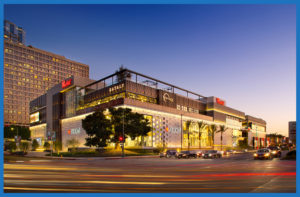
Although anchor stores like Sear’s, Macy’s, Kohls and others are reporting planned closures in shopping centers and malls around the country, outlets are seeing a resurgence in consumer activity which means a resurgence in retail outlet permits.
It’s been almost a decade since anyone has wanted to develop large-scale retail centers of any kind, and the political climate has changed quite a bit in that time.
Concepts of Development
Permitting retail outlets requires developers to keep in mind three basic concepts: location, jurisdiction requirements, and exterior work.
Location
Research
There will never be enough said about researching the locations for potential projects, and the research for retail outlet permits will need to be specific about ground-up construction, potential parking structures, and possibly demolition. Another is factor I’ll get into is the use for a location. Let’s talk about ground-up construction for a minute, as it differs from retail tenant improvement permits due to the additional permits required:
- Shell permit (sometimes call “core and shell”): Subject to building permit package requirements
- Interior improvement work such as electrical, racking, mechanical, and plumbing permits
- American’s with Disabilities Act (ADA): An update to ADA requirements was published in 2016.
- Racking permits for any shelving over 5’9.”
Parking
Additionally, parking structures require their own research as some locations will require entirely new parking while others will be intensifying or adding to existing parking. You will also need to pay attention to ADA with parking, if you don’t you’re opening your development up to a whole lot of risk. We will get into permitting parking structures in another article but I do need to make mention of it here.
Demolition Permits
Let’s say you’re doing a ground up outlet project after demolishing an existing space, then you will need a demolition permit. Let me pause here and say, cities pay particular attention to these types of permits as they directly affect public safety. We’ve all seen youtube videos of building demolition, and while cool from the safety of a computer screen, it can be very dangerous for those on the ground. Demolition permits may require checks from:
- building
- planning
- fire prevention
- public works
Use
The single most important aspect of a site to research during the due diligence phase, in relation to permits, is the use of a site or space. Outlets Resource reports more outlets are being built in metro areas with denser populations instead of the traditional areas in the boondocks (Outlet Resource, “ A Shifting Future for Outlets”) . This roughly translates to harder conditions to meet in order to get construction permits for the project. If the use is not for retail spaces or larger retail spaces you will need to get a change of use permit. It is important to remember that in addition to zoning district approval and land use regulations your application will also be under scrutiny under provisions of the municipal code, the jurisdiction general plan, and other department policies based on the site. Here is a list of some of the department that may need to approve your change of use before you can process the permit:
- Planning Commission
- Coastal Commission
- Historical Preservation
- Local Economic Redevelopment
- Department of Transportation
- Geological Survey
- Neighborhood Council
- Housing Authority
Jurisdiction Having Authority Requirements (JHA):
Research

The devil is in the details when it comes to submittal requirements put forth by the jurisdiction, and paying attention to these details pays out in dividends on the tail end of the permitting process. Conduct due diligence, or have a professional permit expediter do it, and double-check:
- Design Review Requirements
- ADA updates *JHA’s can adopt the 2016 update as they see fit
- Fire Prevention
- Mechanical
- Electrical
- Plumbing
- Racking
- Required departmental clearance: For example, City of Los Angeles requires clearances from all departments for large retail projects
Also, research any special programs the jurisdiction may offer for larger retail projects so you don’t get cast aside for smaller or easier projects.
Exterior Work:
Façade
Some retailers like having specific textures and facades for the exterior of their building to enhance the consumer experience, and as the design unfolds so too do permit requirements. Developers need to factor in materials that may or may not be approved already, as well as, electrical or mechanical factors required by it. At the very least a building plancheck will be required. Additionally, think about mounting and structural calculations that will be required by the city in order to ensure public safety.
Signage
Often signage permits are separated from the main project, but for our purposes we should speak about what may be required for signage permits. At the very least you should be prepared for a building permit plancheck and electrical plancheck with respect to the signage for the outlet. Good news, unless it is an elaborate sign the plancheck should not be too extensive. For some cities the check can be over-the-counter!
Conclusion:
While stores like JC Penny are expecting to close up to 30% of their stores in 2017, at least 45 outlets are expected to be in development over the next 3 years. Indeed, Tanger Outlets report a 97% occupancy rate for their outlets at the end of 2015. As retailers like Nordstrom, Macy’s, and The Limited downsize and try their hands at outlet concepts (i.e. Nordstrom Rack, Backstage, etc…) it’s important to keep in mind what it will take to permit those projects. They may be using lessons they learned from mixed-use trends over the past 3 years to provide an outlet experience to consumers. As the outlet trend moves closer to urban areas with denser populations you can expect permits to be more complicated and political to get.
